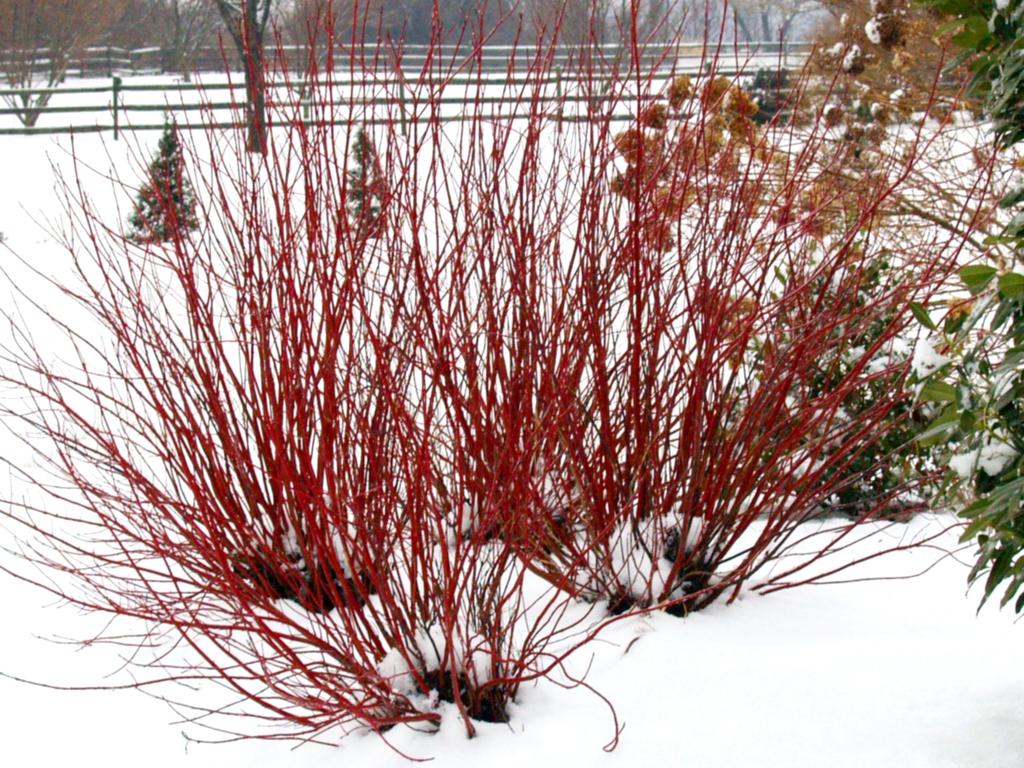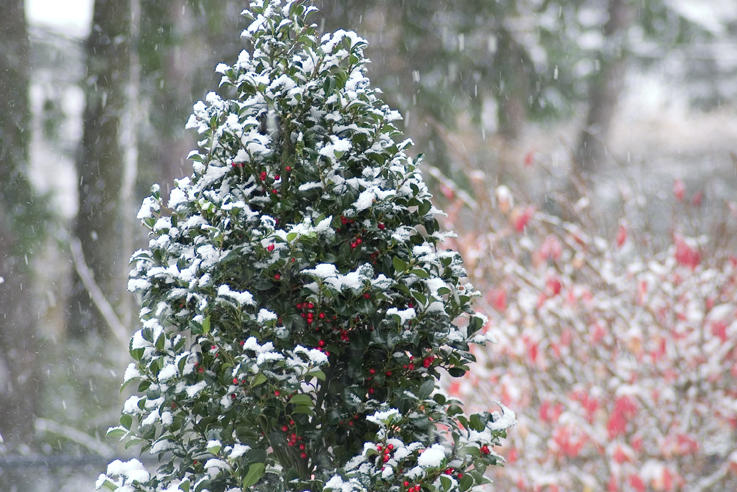Winter Garden Damage - What Now?
Has your garden suffered from winter damage? Has Ice, Salt or unusually cold weather caused your garden harm? Learn how to help your garden recover.
Winter can offer obstacles for our gardens. Cold, snow, ice, freeze/thaw cycles, wind, salt from treating roads and sidewalks are a few that quickly spring (hmm, I think I might be subliminally wishing for better weather) to mind. Most of those obstacles are easily overcome, but some are more challenging.
Cold, Snow, Freeze/Thaw Cycles – In Other Words, Normal Winter For Cold Winter Climates
 These issues can by and large be mitigated by choosing plants that are cold hardy for your area and that are suited to the spot in your garden where they are being planted.
These issues can by and large be mitigated by choosing plants that are cold hardy for your area and that are suited to the spot in your garden where they are being planted.
What does suited to the location mean? It means if you have a place where the wind tends to come whistling through the garden, don’t plant something that is susceptible to wind damage. Put that plant in a spot where it is protected from wind. If a plant doesn’t like wet feet, don’t plant it in the low, wet spot in your garden. Another name for this is Right Plant, Right Place and we do cover this topic in-depth. Putting each plant in a spot where it can thrive leads to good plant health.
Why is plant health important? Healthy plants are much better able to survive adverse conditions than unhealthy plants. So, the first step to having your garden come through winter in good condition is by choosing good plants that suit your environment and choosing suitable planting locations for each plant.
Unusually Cold Temperatures
Non-Dormant Plants: If you are going to have a night or two of unusually cold temperatures, old bed sheets or other light fabric, can be used to cover non-dormant plants prior to the arrival of the cold air. You may not think it will make much difference, but a bed sheet can easily be the difference between life and death. As soon as temperatures return to a comfortable level (for the plant, not for you) remove the covering. You CANNOT leave the covering on long-term.
Dormant Plants: Do nothing. It is counterintuitive, I know, but sometimes nothing is the best course of action.
Once the Cold has Passed
Annuals – if the foliage is brown and or mushy, remove it and compost or discard it. Plan on replacing your plants in spring.
Herbaceous Perennials –Remove brown and mushy foliage. However, do NOT assume that the plants are dead. Even if you are used to the plants remaining green throughput the winter, they may not be dead. Many perennials are “root hardy” which means that although the foliage and stems are dead, the plant will regrow from the root system. In spring, be lazy and procrastinate. Give the “dead” plants time to regrow from the roots before replacing them with new plant material.
Shrubs – Do nothing. This is another great time to be a lazy gardener. Resist the temptation to help and just wait for spring. See what new growth emerges and prune after you can see the true damage to your plants. If there are obviously broken branches, you can remove them, but other than that – hands off.
Ice
 No matter where you live, ice is not considered normal. Ice is pretty much the cruelest thing that can happen to your garden in winter. The sheer weight can be devastating. You are going to want to try and rush out and help your plants. Resist that urge. Do NOT try to help. Take a deep breath and procrastinate.
No matter where you live, ice is not considered normal. Ice is pretty much the cruelest thing that can happen to your garden in winter. The sheer weight can be devastating. You are going to want to try and rush out and help your plants. Resist that urge. Do NOT try to help. Take a deep breath and procrastinate.
Do not knock ice off branches, channel your grade school days and keep your hands to yourself. Allow the ice to naturally melt. The branches beneath the ice will be brittle, trying to remove the ice is most likely going to lead to more damage to the plant, not less.
If you have trees or limbs that have fallen and are blocking driveways, roads, entrances to your home or are dangling dangerously, do carefully remove this material. If you are not comfortable with the power tools that may be necessary to remove the material, have a professional handle the job. Your safety comes first. IF THERE ARE FALLEN POWER LINES INVOLVED, DO NOT ATTEMPT TO DO ANYTHING OTHER THAN CALL YOUR POWER COMPANY.
 Herbaceous Perennials: Once the ice melts, remove any brown or mushy foliage and any broken stems, compost or discard the plant material. Then do nothing until spring. In the spring, if you want to trim the plants to tidy them, do so. Then wait for new material to emerge. Be patient, it can sometimes take a while for perennials to emerge.
Herbaceous Perennials: Once the ice melts, remove any brown or mushy foliage and any broken stems, compost or discard the plant material. Then do nothing until spring. In the spring, if you want to trim the plants to tidy them, do so. Then wait for new material to emerge. Be patient, it can sometimes take a while for perennials to emerge.
Shrubs: Once the ice melts, remove broken branches ONLY. Then do nothing. I know it will be tempting to tidy the plant, resist that impulse. Pruning now could encourage new growth too early, which can harm the plant. Branches that appear to be dead, may not be. Do not prematurely give up on your plants. Once spring rolls around wait until the shrub leafs out and new growth begins. This will allow you to know for sure which parts of the shrub are dead. Remove dead branches.
The rest can be pruned to shape, if needed or if you want to. This may mean sacrificing blooms on spring blooming shrubs. If you don’t mind a somewhat bedraggled shrub in your landscape, wait until after the spring blooming shrubs flower and then prune to shape.
Trees: Remove downed branches or trees, if you can safely do so, or hire someone with experience to take care of this task. For broken branches and additional pruning, it is best to hire a certified arborist to assess and service the plants. Trees are a long term investment and much harm can be done by accident. Let the professionals handle it.
Salt Damage
 You may already recognize that salt really isn’t all that great for plants. Salt applied by road crews or on sidewalks by homeowners can end up in nearby garden beds. There are a couple of ways to deal with this issue.
You may already recognize that salt really isn’t all that great for plants. Salt applied by road crews or on sidewalks by homeowners can end up in nearby garden beds. There are a couple of ways to deal with this issue.
-If you can reasonably assume that salt will be applied regularly, consider choosing plants that can withstand a bit of salt (yes, we have circled back around to Right Plant, Right Place). I am a big advocate of Cooperative Extension. Since Cooperative Extension is a state based program, they are a great source of information specific to your area. Internet searches will also yield good results for plants lists.
-If salt is unlikely to be an issue, then you may prefer not to limit your plant selection. The best way to deal with an unusual application of salt to plants is water. Once the temps warm up and snow cover melts, lightly spray off plants to wash off any salt that might be on foliage. Then in early spring, water the affected areas heavily to wash the salts out of the main root zone of the plants. You want to soak at least 6 inches of soil. This will allow the majority of roots to reside in soil where the salt has been flushed out.





